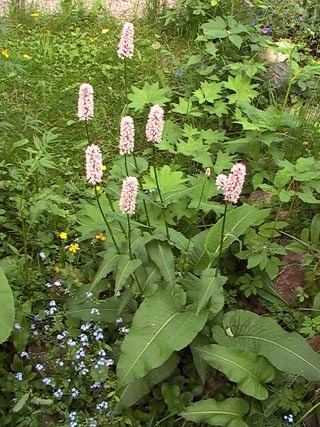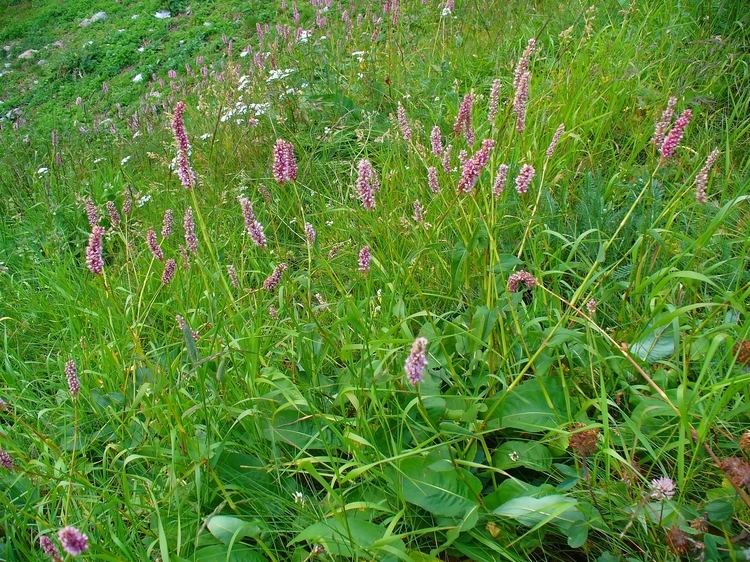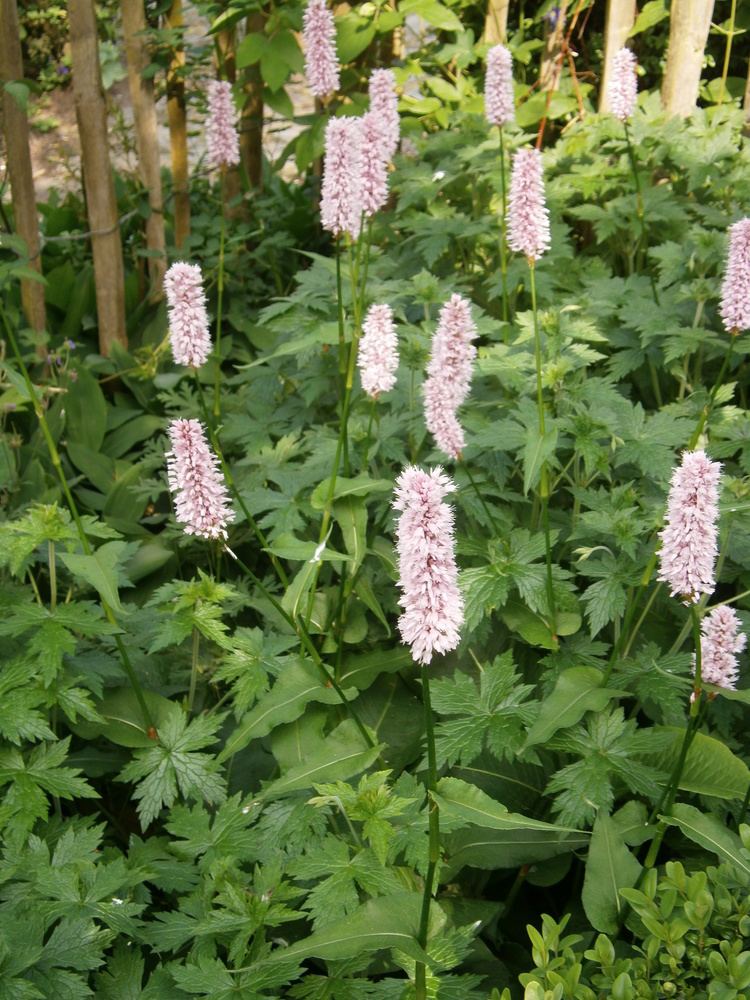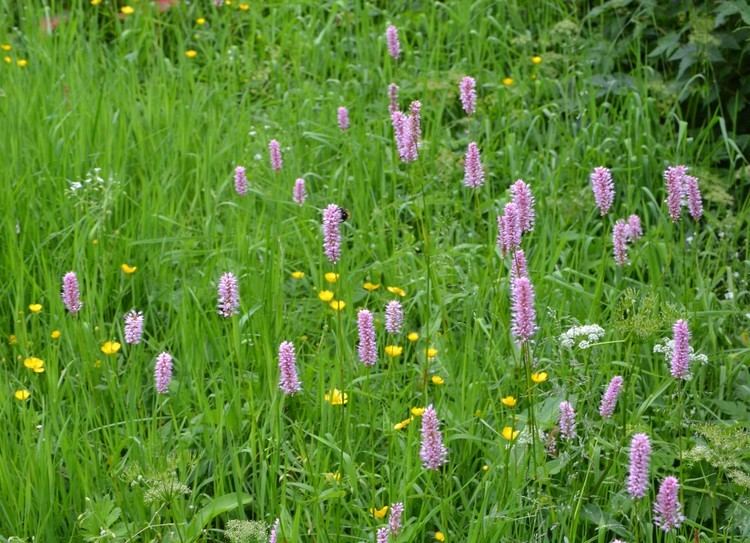Kingdom Plantae Family Polygonaceae Scientific name Persicaria bistorta Rank Species | Order Caryophyllales Genus Bistorta Higher classification Knotweeds | |
 | ||
Similar Bistorta, Knotweeds, Knotweed, Polygonaceae, Potentilla erecta | ||
Adderwortel common bistort bistorta officinalis persicaria bistorta
Bistorta officinalis, commonly known as bistort or European bistort, is a species of flowering plants in the dock family Polygonaceae, previously included in the genera Polygonum or Persicaria. Other common names include snakeroot, snake-root, snakeweed and Easter-ledges.
Contents
- Adderwortel common bistort bistorta officinalis persicaria bistorta
- bistorta officinalis
- Description
- Distribution and habitat
- Uses
- References

bistorta officinalis
Description

Bistort is a perennial herb that grows to 20 to 80 centimetres (8 to 31 in) tall. It has a thick, twisted rootstock which has probably given it its common name of snakeroot. The stem is erect, unbranched and hairless. The leaves are usually hairless, the basal ones are longish-oval with long winged stalks and rounded or heart-shaped bases; the upper ones are few and are triangular, tapered and stalkless. There are stipules at their base which are fused into a sheath surrounding the stem. The inflorescence is a spike. The individual flowers are pink with five perianth segments, eight stamens, three fused carpels and three free styles. The fruit is a glossy black nut. Flowering takes place in June and July.
Distribution and habitat

Bistort is a native of Europe but is often cultivated and has become naturalized in other parts of the world such as in the United States in New England. It is typically found growing in moist meadows, nutrient-rich wooded swamps, forest edges, wetlands, parks, gardens and disturbed ground.
Uses

Bistort has been cultivated both as an ornamental plant and as a vegetable, its roots, leaves and young shoots being steamed or boiled. Many of its occurrences in the wild may be as a garden escape. It has also been used traditionally for medicinal purposes. The roots are rich in tannic and gallic acids and both these and the leaves have been used to treat wounds.
